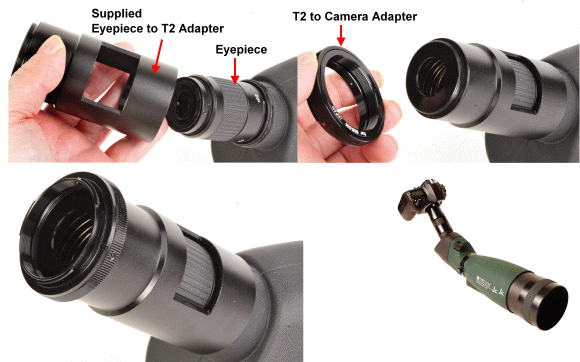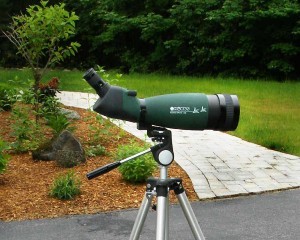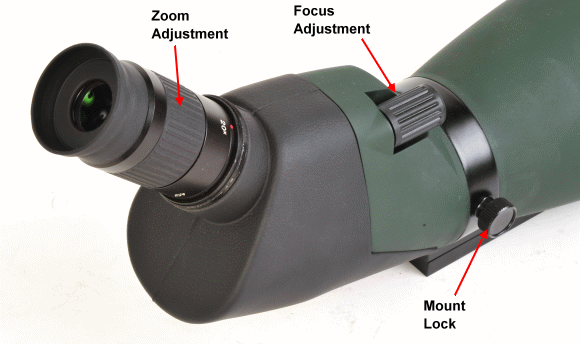When I set up to shoot these days, there is lots of gear and equipment to haul out to the range and the distances shot keep getting longer. Consequently I’m huffing and puffing by the time the chronograph is set up and targets are placed, meaning there is no positive anticipation of walking 200 yards to check a three shot group. At public ranges the problem is compounded because the combination of rifle and scope at the bench may not have a scope powerful enough to see bullet holes at 100 yards and waiting half an hour for a cease fire to check targets can get a little tedious so it seemed time to look into a spotting scope.
Konus
Konus is headquartered in Verona, Italy, with subsidiary offices in Madrid, Spain and Miami, Florida. The company manufacturers and sells under its brand, optical products as well as meteorological instruments and time keeping instruments for both commercial and consumer applications. The Konus spotting scope line is available through virtually all discount retailers.
The Konuspot 20-60×100
The Konus 20-60×100 is the largest spotting scope within the Konus product line. It was selected for the 20-60x Zoom magnification range, as well as the light gathering capability of the 100mm objective lens. The Konuspot’s body is rubber coated aluminum for light weight and durability. The prism corrects images to normal eyesight orientation. The 20-60x zoom magnifying eyepiece is a 2″ type, mounted at 45° to the scope’s optical centerline.
Magnification selection is made by twisting the rubber collar on the eyepiece. Focus shifts with changers to magnification, however, correction is quick with the focus knob mounted on the prism housing. The tripod base fits all standard ¼” x 20 tripod threads. Loosening the mount lock permits 360° rotation of the scope relative to tripod position.
As a spotting scope
In its primary role, spotting scope, the images are clear, sharp and steady. The 5mm exit pupil is a good match up for the human eye under normal shooting light, so there are no aggravating eyepiece blackouts and the eye relief of 18mm-12mm, depending on magnification selected, makes for comfortable viewing. A wide field of view spared me the typical hide-and-go-seek I normally have to play when trying to locate my target and I did not have to write my name on my target to make sure I was not staring at my shooting neighbor’s paper.
The image, regardless magnification, had crisp contrast and the 4″ objective pumped in a good deal of light. The lenses are multicoated and the scope is weatherproof. Focus was not hyper so there was little overshooting adjustment or chasing focus on a target. Even small 22 long rifle bullet holes were easy to spot on black and white paper targets at 100 yards. The image was very steady. Still, at only 86 ounces and 19″ in length it is easy to carry, even on top of a tripod.
Camera Mounting
Spotting scopes are often used for photography, terrestrial, planetary and lunar. The Konuspot is packaged with a camera adapter, which is actually a tele extender used where the camera is capturing an image that is projected on the scope’s eyepiece. The adapter slips over the scope’s eyepiece and is secured to threads on the spotting scope intended for this purpose. A T 2 adapter that matches the threads on the scope’s adapter and the lens flange on the camera is crewed on next, then the camera body, without lens, is slipped onto the T 2 adapter. As you can see below it is much easier to illustrate than describe.


I hesitated to post these images as they are so different from what is seen when checking targets or looking at animals through the eyepiece. The Konuspot is a good scope compared to many scopes that sell for three times the price. However, I thought that since an adapter is packaged with the scope and it’s kind of fun to take there types of pictures… why not?
The images were shot at 20x, 40x and 60x – top to bottom. These images are not really created by using the scope as a telephoto lens, they are taken as the image that appears in the scope’s eyepiece. Consequently, every minor flaw and lens aberration is significantly amplified before the image in the eyepiece is recorded by the camera.
Because of the long focal length of the lens and high eyepiece magnification, depth of field is very flat so that items used to focus are sharp, however, items immediately before or after fall out of focus relatively quickly. Additionally, the 5mm exit pupil and wide field of view at low magnification will not cover the camera’s image sensor, which causes vignetting outside of the central area of the scope’s lens. What is in focus is sharp, contrast and color are both very good.
I was hoping for a clear night sky to take lunar pictures with the scope, but we have had constant rain and overcast skies. I believe these types of images would have shown full focus, less vignetting and the same quality color and contrast.
Wrapping Up
 The Konuspot is a quality, high power, value spotting scope. At $225-$275 through discount retailers, it is substantially lower in price than competing brands which makes owning a good spotting scope affordable. A full 4″ objective lens scope, it is light weight and easy to tote when setting up for shooting.
The Konuspot is a quality, high power, value spotting scope. At $225-$275 through discount retailers, it is substantially lower in price than competing brands which makes owning a good spotting scope affordable. A full 4″ objective lens scope, it is light weight and easy to tote when setting up for shooting.
Controls are located for human use, something too often overlooked. The built in objective lens sunshade cuts way down on flare and the zoom eyepiece is smooth in operation. For a full size spotting scope, with longer range near and longer range applications, it is certainly worth a look.




 The Konuspot is a quality, high power, value spotting scope. At $225-$275 through discount retailers, it is substantially lower in price than competing brands which makes owning a good spotting scope affordable. A full 4″ objective lens scope, it is light weight and easy to tote when setting up for shooting.
The Konuspot is a quality, high power, value spotting scope. At $225-$275 through discount retailers, it is substantially lower in price than competing brands which makes owning a good spotting scope affordable. A full 4″ objective lens scope, it is light weight and easy to tote when setting up for shooting.
Email Notification